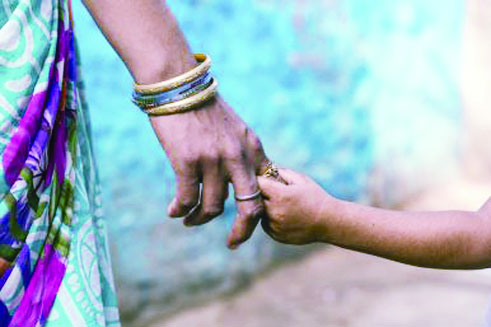Fertility rates have fallen, but the inability of men of effectively manage and have a proper family planning continues. It is a deep rooted social, economic, and gender inequality issue that makes the issue difficult to resolve.
In September 1994, India was among the 179 countries that signed the first international agreement recognising the right to sexual and reproductive health at the International Conference on Population and Development (ICPD) in Cairo. This meant that India agreed that couples and individuals had the right to decide whether, when or how many children they wanted to have. With 2019 being the 25th anniversary of the historic ICPD Programme of Action, how far has this right been realised in India? How many women are empowered to make their own choice and be in control of their bodies? More specifically, since the burden of planning families is on women, have they been able to exercise their reproductive rights? Has there been an enabling environment to facilitate women’s autonomy in reproductive decisions?
Many of the answers to these questions lie in the Government’s population policies and its skewed implementation. One of the biggest barriers to realising reproductive rights has been the inherent gender discrimination embedded in its approach to family planning. The push for female sterilisation by Government family planning programmes has undermined women’s autonomy. There has not been any major shift in the Government thinking although terminologies have changed. Even though it is claimed that the population policy is no longer target-oriented and offers contraceptive choices, female sterilisation remains high and the most popular form of contraception. The 2005-06 National Family Health Survey (NFHS 3) had found that 77 per cent of women had not used any other method of contraception before accepting sterilisation. Not much has changed since then.
Ninety three per cent of the total 14,73,418 sterilisation procedures between 2017-18 were conducted on women, according to a June 2018 report by the Government’s National Health Mission. Only 6.8 per cent were performed on men. In fact, there has been a decline in male sterilisation from an already low 1.0 per cent in 2005-06 (NFHS 3) to 0.3 per cent in 2015-16 (NFHS 4). It is not surprising that the percentage of male sterilisation (0.3) in urban and rural areas is exactly the same.
Further, drop in the prevalence of contraception, from 56.3 per cent in 2005-06 to 53.5 per cent in 2014-15 (NFHS 4), means the onus of ‘controlling fertility’ has continued to remain on women. That men are disinclined to take responsibility has been corroborated by NFHS 4 which clearly states that “female sterilisation remains the most popular modern contraceptive method”, even though compensation in high focus States is higher for vasectomy (Rs 2,000) than for tubectomy (sterilisation for women), which is Rs 1,400.
While much of the female sterilisations stem from entrenched patriarchal beliefs that males would lose their virility and masculinity if they opted for vasectomy, women’s lack of sexual and reproductive health knowledge about appropriate and available contraceptive methods and, their limited access to services has increased their vulnerability. Women have been given little or no information and counselling on contraception and that has prevented them from knowing its benefits and side effects. This could be why one of three women had not given informed consent before undergoing sterilisation, according to a Population Research Institute study.
For many women, this ignorance has had fatal consequences. In the last five years, approximately 1,000 women have died following sterilisation procedures. Government sterilisation camps were banned in 2016 by the Supreme Court following the death of 363 women during or after sterilisation conducted in such camps between 2010 and 2013.
In Andhra Pradesh, the fall out of the focus on female sterilisations as a means of family planning and fertility control has been the onset of early menopause. The State has the highest proportion of women aged 30-49 who are in menopause in the country at 31.4 per cent. Bihar comes second with 27.1 per cent. This high menopause in Andhra Pradesh is due to the numerous hysterectomies (surgical removal of uterus) conducted with the simultaneous removal of the ovaries. Removal of ovaries is the biological equivalent of castration and results in the immediate and sudden onset of menopause, in contrast to natural menopause which is a gradual process.
Hysterectomies have been driven by sterilisations for a long time in Andhra Pradesh, the fifth most populous State in India. Female sterilisation accounts for 98 percent of contraceptive method use according to NFHS 4. It’s a vicious circle — sterilisations conducted under unhygienic conditions have led to medical conditions prompting many women to opt for hysterectomies to end its debilitating after effects. Eighty-two per cent of the women who opted for hysterectomies had undergone a family planning operation prior to it, found a 2009 study by an autonomous institution in the State.
India had committed to enabling its people to make informed sexual and reproductive health choices as a matter of their fundamental human rights at the 1994 ICPD. But it hasn’t been able to fulfill its promise entirely. Although fertility rates have fallen, it is varied. Even now, inability to engage men effectively in family planning and, deep-rooted economic, social and gender inequality continue to deny women the power of choice. As the United Nations Population Fund 2018 State of the World Population report points out, fertility transitions can be sustained only when reproductive health services are universally accessible and women are empowered to take decisions. Only then will women be able to avert unplanned pregnancies, unwanted fertility and unnecessary abortions and, be free of ‘coercive’ sterilisations.
(The writer is a senior journalist)
Writer: Swapna Majumdar
Courtesy: The Pioneer








 OpinionExpress.In
OpinionExpress.In















Comments (0)